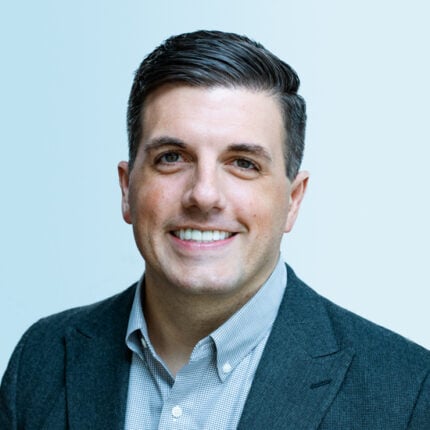It’s a classic Hollywood scenario: our protagonist suddenly receives the gift – or curse – of knowing what’s going on inside others’ minds, and hilarity, consternation – and usually some tough lessons – ensue.
I’m here to offer that gift to you. Across the globe, we’ve seen the most senior university executives redirecting their gaze from external PR and fundraising activities back inwards towards the building blocks of the institution.
We wanted to know what they’re thinking, how they are interpreting the past year of lockdowns, and where they think the sector should be heading. So my team of researchers at EAB spent the first few months of this year conducting a listening tour of vice chancellors in the UK.
Here’s what we found – and our digest of some of the big strategic questions facing the sector. If you have the answers, well, maybe you should be in the boss’s chair…
Responsibilities to students and staff
In preparing students for their next chapter, how they learn is just as important as what they learn
Students are more likely than ever to enter a partially or completely remote workforce. Our pedagogy must reflect that fact. There’s a difference between teaching online and teaching online well.
While the content of students’ courses will always matter, the method of delivery is becoming just as important. Learning and interacting virtually at university serves as a dress rehearsal for the working reality into which students will graduate.
Institutions that successfully balance synchronous and asynchronous learning, encourage active deliberation in virtual platforms, and maximise face to face interactions will create the most compelling message about their provision in a changing world.
While many of our students eagerly await a return to face-to-face instruction, what moments and experiences across the curricula are best delivered in a virtual or asynchronous format?
Digital poverty and resource insecurity are deepening the fault lines of inequity on campus
Our approach to students with diverse backgrounds—in the broadest sense of the term—has been largely performative. We won’t, and shouldn’t, be allowed to get away with that moving forward.
Last year was a year of reckoning for many in the sector, as the pandemic revealed previously hidden challenges of digital poverty and resource insecurity. A global wave of activism centred on racial justice and equity simultaneously brought leaders face to face with demands for more support for and engagement with BAME students and staff. Universities have long espoused support for inclusivity, but more accountability is now expected for translating those words into action.
Moving forward, how can we preserve the most effective new initiatives that made the university more accessible and engaging to under-represented and under-resourced communities?
Staff wellbeing and mental health are at a tipping point, demanding more than cursory support
Our staff have been heroic in their accomplishments. But the nature of their work is that they’re always “on”. If we’re going to remain flexible in working arrangements, we have to allow them to turn “off”.
Vice chancellors lauded their executive teams for stepping up during a time of crisis—but the sustainability of those workloads is cause for concern. In seeking to remain responsive and supportive of students and peers, staff across the organisation chart are experiencing burnout.
Leaders are seeking better ways to promote cool off periods among their teams. However, stress and mental ill-health have long been unacknowledged features of academia—and therefore require systemic solutions beyond mental health resource hubs.
How do we rebuild a sense of community – amongst students and staff – while ensuring we don’t place undue burden on those staff members normally driving such engagements?
Responsibilities to communities
Expanding partnerships is the key to regional economic recovery
We don’t just work for the university; we work for a community that expects us to partner more closely with other organisations to create a pipeline from early childhood education to high quality, local jobs.
In the wake of a global economic downturn and alongside public scepticism about the value of HE, universities cannot afford to be passive in advancing regional economic recovery. In many cases, recent actions—like partnering with local entities to fulfil test and trace mandates—have revived dormant government and business relationships. By better promoting strengths in talent, innovation, and location, universities can both support current economic needs and advance long-term strategies.
How can we leverage our “primacy of place” to build new-in-kind community relationships once the immediacy of the pandemic is past?
Flexible, lifelong learning is more possible than ever but will require a more flexible business model
We know the half life of professional skills is only getting shorter—and employers and alumni alike are looking to us to keep graduates job ready. Doing so means embracing new forms of flexible learning.
A year of online delivery has converted many to the benefit of flexible learning built around students’ needs. Making real progress on trendy ideas like step-on/step-off courses, multiple start points, and stackable credentials means first accepting the premise of a lifelong learning journey.
Rather than abandoning the traditional provision, an expanded business model should account for everyone from those looking to transfer a level three, four or five qualification into a university degree, to working professionals eager for badges and bootcamps.
Moving forward, which of the many pandemic-trialled delivery models are worth continued investment to reach new markets and bolster community partnerships?
Meeting global deadlines on climate change requires focusing on more than flashy wins
If we don’t do more to scope our efforts, improve our measurements, and coordinate our sustainability efforts, we’ll never reach our goals. The stakes are too high not to put in the work to get this right.
Given their role in advancing climate science and research, universities are natural leaders in sustainability efforts—but they must also do their part in moving the needle on emissions and energy reductions. To do so, universities need to scope lofty aspirations to achievable, realistic actions, even if this means sacrificing flashy PR wins. For most, the biggest opportunities are out of the limelight, lurking behind the walls of an aging campus estate.
Are we appropriately scoping our sustainability initiatives to ensure we’re choosing the right fit programmes that actually result in impact?
Responsibilities to the institution
In considering the size and shape of the academic portfolio, it may be time for a diet
We’ve added course after course without a process to monitor whether they continue to meet goals, demand, and quality expectations. There’s no way they all do.
Comprehensiveness can be an admirable goal for many institutions, but module and course proliferation have real consequences. The shift of academic delivery to a remote environment made this plain. Beyond draining instructional capacity, proliferation leads to administrative bloat, confusion in the market, and unclear pathways for students. Tighter management of modules and the courses they comprise will be necessary to ensure a university’s offer remains of value to students.
What is the right academic programme mix that plays to the strengths of our academic staff, drives value for our students, and stays true to our institutional goals?
The quality of work being done matters more than where work is being done
Once I start expanding my talent pool to include the entire country or even beyond, it’s only a short leap to thinking about what other physical assets and resources can be reimagined, too.
There are compelling reasons not to return to a world of desk-bound employees coming onto campus every day. Increased efficiency, better work-life balance, reduced carbon footprints, and the potential for permanently offloading real estate are nudging leaders towards more flexible arrangements.
A partially remote workforce introduces new opportunities for universities to seek the best (or most cost-effective) staff for realising the mission, without being beholden to geographic boundaries.
How will we draw the line between roles that are critical to students’ in person experience and will need to return to in person operations, versus those that can be more flexible?
Quick decision making shouldn’t be reserved for emergencies
We need to retain the agile decision-making muscles we’ve built, but that requires doubling down on transparency, as some stakeholders are losing opportunities to participate via old structures.
Early months of pandemic operations necessitated emergency command structures, with leaders overcoming operational silos to maintain business continuity. They found success in slimming down decision making structures and elevating professional staff with the right skills and attitudes to work in a more fluid environment. While these decisions were made in extraordinary circumstances, leaders hope to retain the spirit of agility, creativity, and action moving forwards.
How do we maintain the spirit of consensus-making and collaboration that forms the DNA of the academy while ensuring our organisation remains responsive to the challenges of the day?
This article is published in association with EAB. Want to slip these nine responsibilities under someone’s office door or into their inbox? Download an infographic with these takeaways here.













